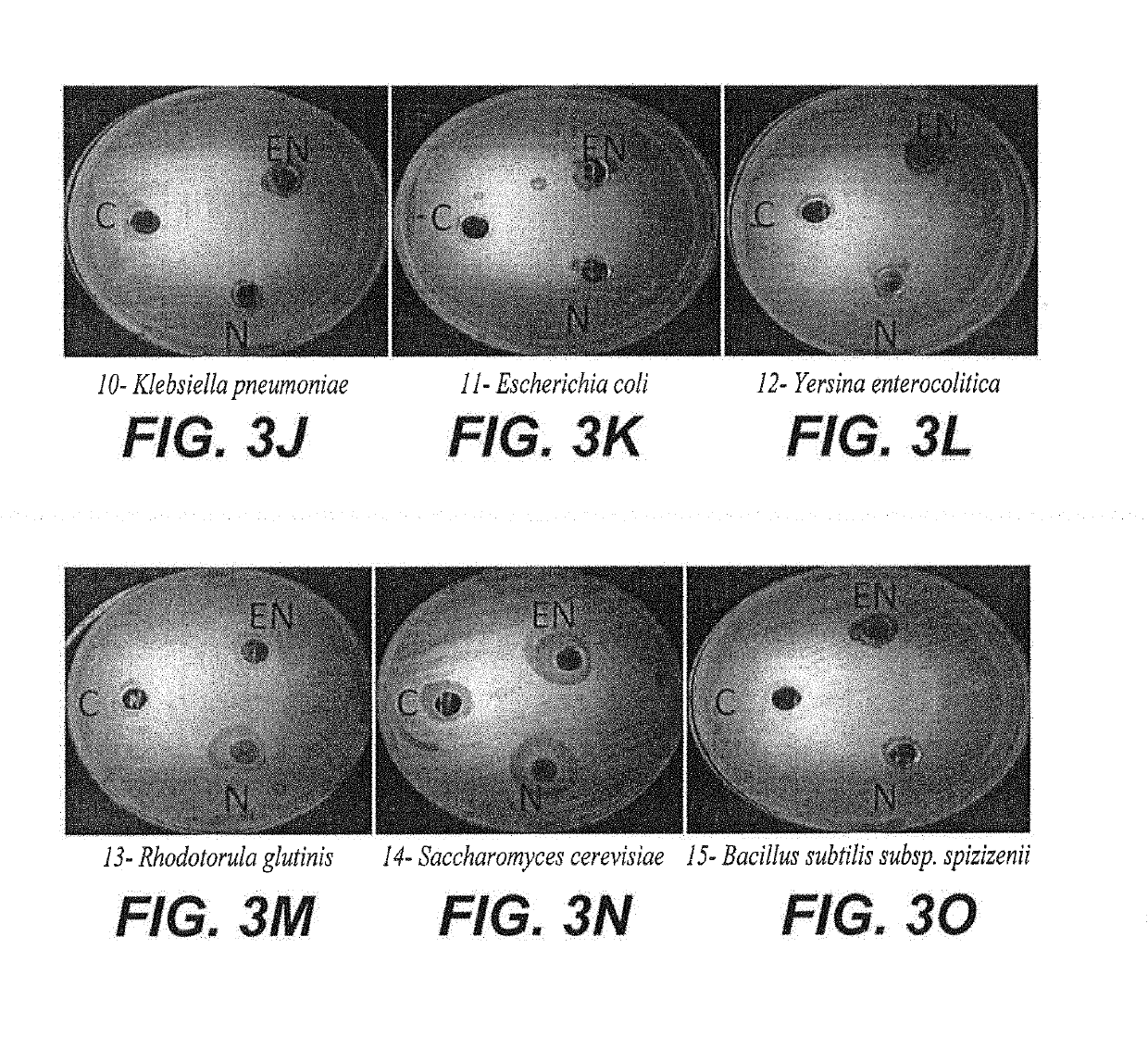Synthesis of black eggplant (Solanum melongena) skin antioxidant nanoparticles
- Summary
- Abstract
- Description
- Claims
- Application Information
AI Technical Summary
Benefits of technology
Problems solved by technology
Method used
Image
Examples
example 1
Synthesis and Characterization of Black Eggplant Skin Nanoparticles and Black Eggplant Skin Extracts
[0040]Black eggplant skin extracts were synthesized as follows. Black eggplants (Solanum melongena) were purchased in Riyadh, Saudi Arabia. The black eggplant skins were separated from the fruits, cut into small pieces, then dried in an oven at 60° C. for 24 hours. The dried black eggplant skins were soaked in methanol (100 mg / ml) overnight in a shaker, producing black eggplant skin extract mixtures. The resulting black eggplant skin extract mixtures were centrifuged at 5,000 rpm for 5 minutes, and the supernatants or black eggplant skin extracts, were filtered using Whatman® No. 41 filter paper and collected for testing.
[0041]Black eggplant skin nanoparticles were synthesized as follows. Black eggplant skins (about 500 mg) were extracted in about 20 ml of methanol under constant stirring to produce a black eggplant skin extract. The black eggplant skin extract was sprayed into boilin...
example 2
Antimicrobial Activity of Black Eggplant Skin Nanoparticles and Black Eggplant Skin Extracts
[0052]The agar diffusion method was used to determine the antimicrobial activity of black eggplant skin nanoparticles and black eggplant skin extracts synthesized according to the method of Example 1 against a variety of microbes. In brief, bacterial strains were grown on Brain Heart Infusion agar (Oxoid CM 1136) for about 24 hours at 37° C. and about 100 μl of 106 CFU / ml of each active bacterial strain were spread on the surface of Muller Hinton agar plates (Oxoid CM 0337). About 50 μg / ml of black eggplant skin nanoparticles were dissolved in methanol and left overnight in the refrigerator. Three holes were bored in each agar plate using a sterile cork borer with a diameter of 6 mm, and a volume (about 100 μL) of the dissolved black eggplant skin nanoparticles and the black eggplant skin extracts were introduced into individual wells, (hole “C” contained 100 μl methanol as a control, hole “E...
PUM
| Property | Measurement | Unit |
|---|---|---|
| Power | aaaaa | aaaaa |
| Mass | aaaaa | aaaaa |
| Volume | aaaaa | aaaaa |
Abstract
Description
Claims
Application Information
 Login to View More
Login to View More - R&D
- Intellectual Property
- Life Sciences
- Materials
- Tech Scout
- Unparalleled Data Quality
- Higher Quality Content
- 60% Fewer Hallucinations
Browse by: Latest US Patents, China's latest patents, Technical Efficacy Thesaurus, Application Domain, Technology Topic, Popular Technical Reports.
© 2025 PatSnap. All rights reserved.Legal|Privacy policy|Modern Slavery Act Transparency Statement|Sitemap|About US| Contact US: help@patsnap.com



